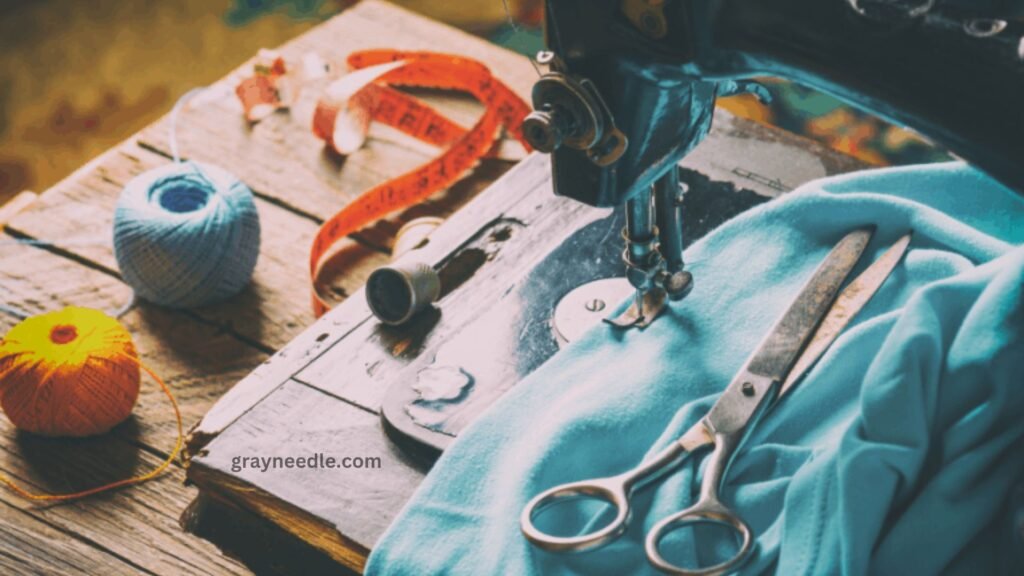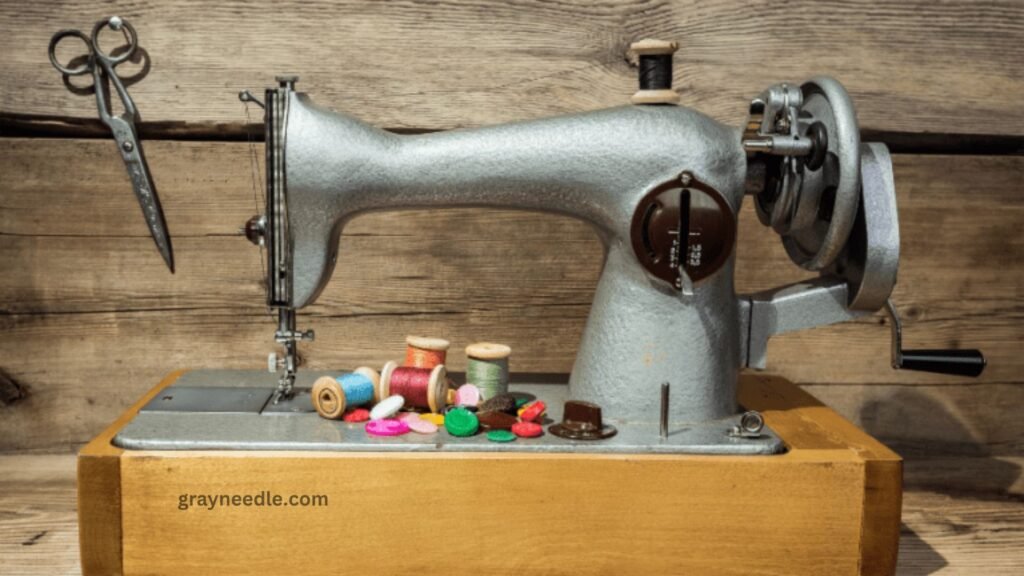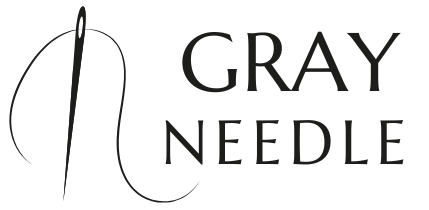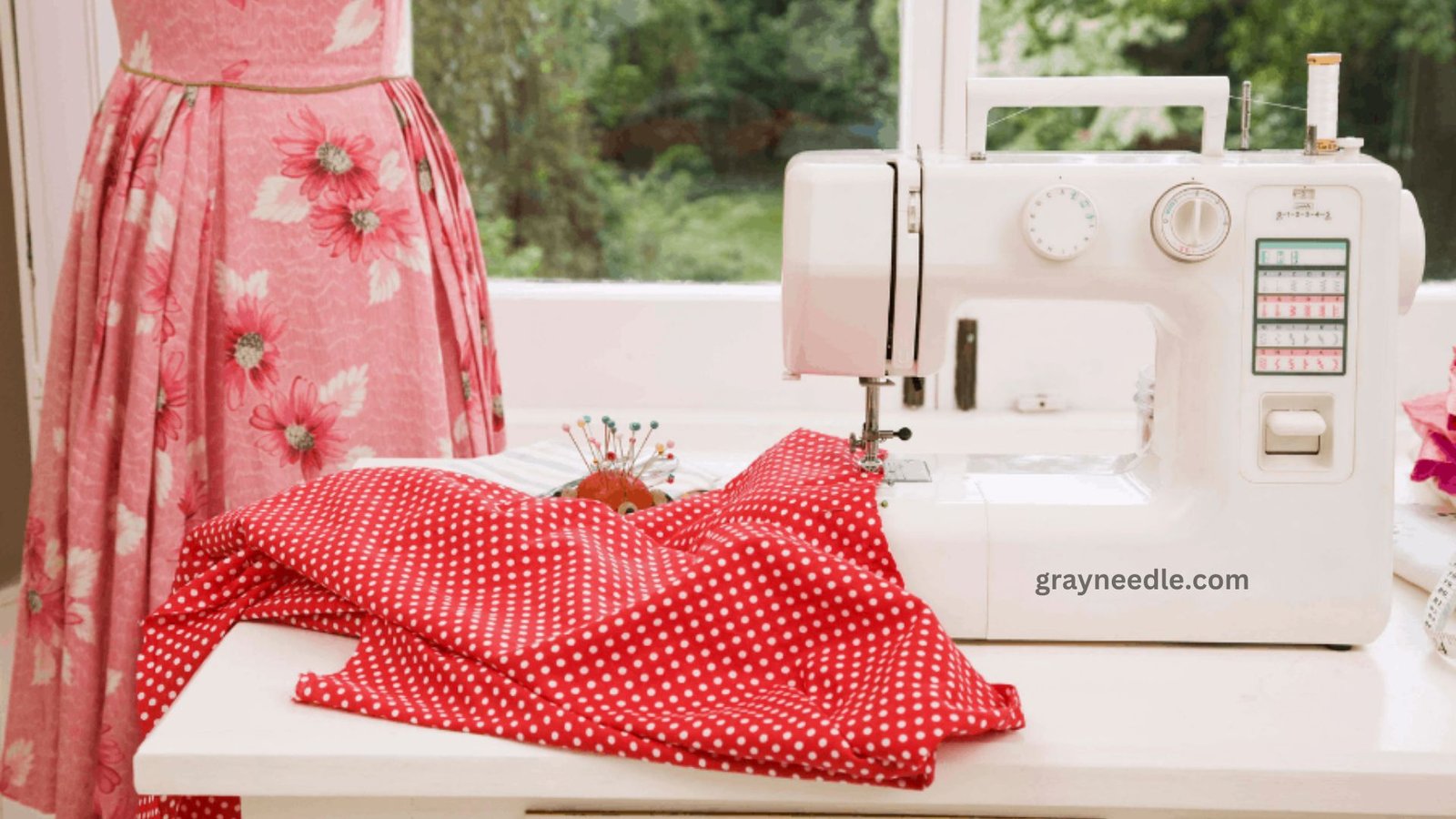When your sewing machine makes a loud clunking sound halfway through a job, there’s nothing worse than turning it on and discovering what’s wrong. Even though this noise can discourage you from sewing, it’s probably quite simple to correct!
What causes your sewing machine to sound clunky, then? An improperly inserted thread may be the cause of a loud, clunky noise your sewing machine makes. Another possibility for the noise could be a jammed object inside the machine or two parts rubbing against one another. If you haven’t lubricated your machine in a while, this could be probable.
Another possible cause of the clunking sound could be a broken needle or a loose needle plate. It’s important to stop sewing as soon as you hear a clunking sound and investigate to see if you can identify the issue.
What Tension Should My Sewing Machine Be on?

It can be scary to get your sewing machine’s tension just perfect. For optimal results, it is helpful to know what tension your sewing machine should be set to. The amount of thread that can flow through the machine to make a stitch depends on the thread tension.
The stitch will be looser the more thread that is able to pass through it. The stitch will be tighter the less thread that is inserted into the stick. A sewing machine’s tension settings normally range from 0 to 9.
The default value for a straight stitch is 4.5. In most cases, this is acceptable for textiles. You should adjust the tension if you wish to make a zigzag stitch or another thread with a wider width. Typically, this kind of stitch calls for a tension of three to four.
Testing your sewing machine is the best way to determine what tension it should be on. If you don’t know how the tension appears on the fabric, it can be challenging to determine whether it is correct. Using contrasting colored thread for the top and bottom allows you to test the tension.
The bottom and upper threads will precisely meet in the middle of the material if the tension is ideal. You will be able to see the top thread through the material if either the bottom or the top tension is too tight or loose.
The bottom thread will show through the material if either the top or bottom tensions are excessively tight or loose. The best thing you can do to find the ideal tension for your project is to experiment with the tension.
How Can I Make My Sewing Machine Quieter?

Sewing machines typically make a lot of noise aside from a clunking sound. There are a few factors to take into account while trying to force your sewing machine to stop. First, confirm that the sewing machine is resting on a level surface. It must to be smooth and devoid of any lumps. A single bump of any size can result in an irregularity.
Another option is to attempt to regulate your sewing speed. When you are in the zone, it is simple to overuse the foot pedal. Given how sensitive the foot pedal is, the noise problem might be the cause. It is advised to apply pressure to your foot gradually rather than all at once when you first start.
To avoid needless noise, it’s also critical to give your sewing machine routine maintenance. The machine will begin to wear down and the parts may begin to scrape against one another if adequate maintenance is neglected.
If you use your sewing machine frequently, you should maintain it at least once a week to keep it in top condition and try to quiet it down a little. This entails disassembling the machine, cleaning it with oil and dust, inspecting it for anomalies, replacing any worn-out parts, and then reassembling it.
If you’ve tried everything to quiet your sewing machine, you can buy a mat designed specifically to absorb the vibration and noise that sewing machines make. By doing this, you can lessen noise and maintain the sewing machine’s stability.
Also Read: Can You Sew Without a Bobbin?
How Do You Fix a Sewing Machine that Keeps Jamming?
One of the most frequent issues with sewing machines is jamming. If it persists, it can be really annoying, but there’s an easy fix for it. First things first, take out whatever fabric you were sewing and lay it aside. To cut the thread, you might need to pull and raise a little bit on this.
After that, take your time looking for every thread fragment that keeps getting stuck. This may mean removing the throat plate, the bobbin, and any other parts that your thread passes through while stitching.
You may reassemble everything when you have cleared out all of the blocked thread. Make sure you inspect your needle before you begin sewing again. The reason for the jamming can be if the needle is even slightly curved. Take out the needle and start over.
How Often Should a Sewing Machine Be Serviced?

This question has a more complicated answer than it first appears to have. It primarily relies on your sewing machine’s age, purpose, frequency of usage, and whether you perform any maintenance on it yourself.
Regular usage of your sewing machine will cause lint to accumulate, lubricants to degrade, and parts to need to be changed more frequently. It is advised to service your equipment at least once a year if you use it in this manner.
You won’t require as frequent maintenance on your sewing machine if you don’t use it frequently and go months or years without using it. But, if you haven’t used it in a while, the lubricants may start to solidify and stop the machine from operating. Before using it once more, you ought to have it serviced.
The purposes for which you utilize your machine might also affect how frequently it requires maintenance. For instance, there is a higher likelihood of lint buildup if you work with thick materials or undertake patchwork quilting frequently. To prevent tension problems, you should service your equipment more frequently.
Compared to a newer machine, an older sewing machine will need more frequent servicing. In order to keep its parts in good working condition and keep the machine from breaking down, older machines will require additional lubrication.
Final Thoughts
It can be unsettling to hear a clunking sound emanating from your sewing machine. Fortunately, it might be simple to solve. Possible causes of the issue include improper thread loading, an object stuck in the machine, or two parts rubbing against one another.
It is important to have regular maintenance performed on your computer to keep it operating smoothly and silently. By giving your equipment regular maintenance, you may avoid worrying about whether it will break down due to an odd noise.


1 thought on “Why Does My Sewing Machine Sound Clunky?”